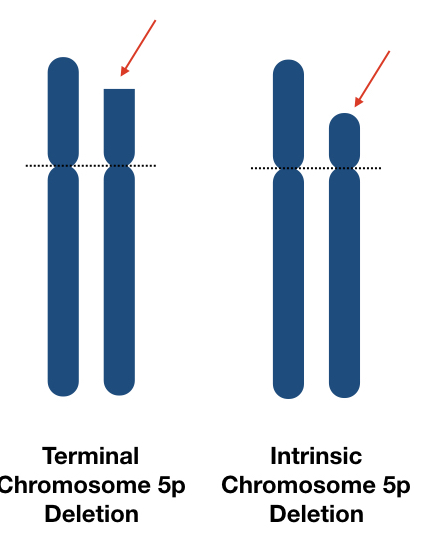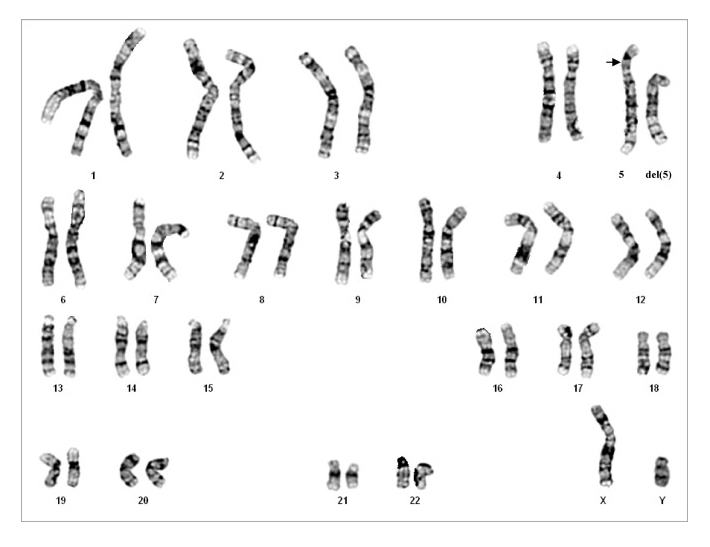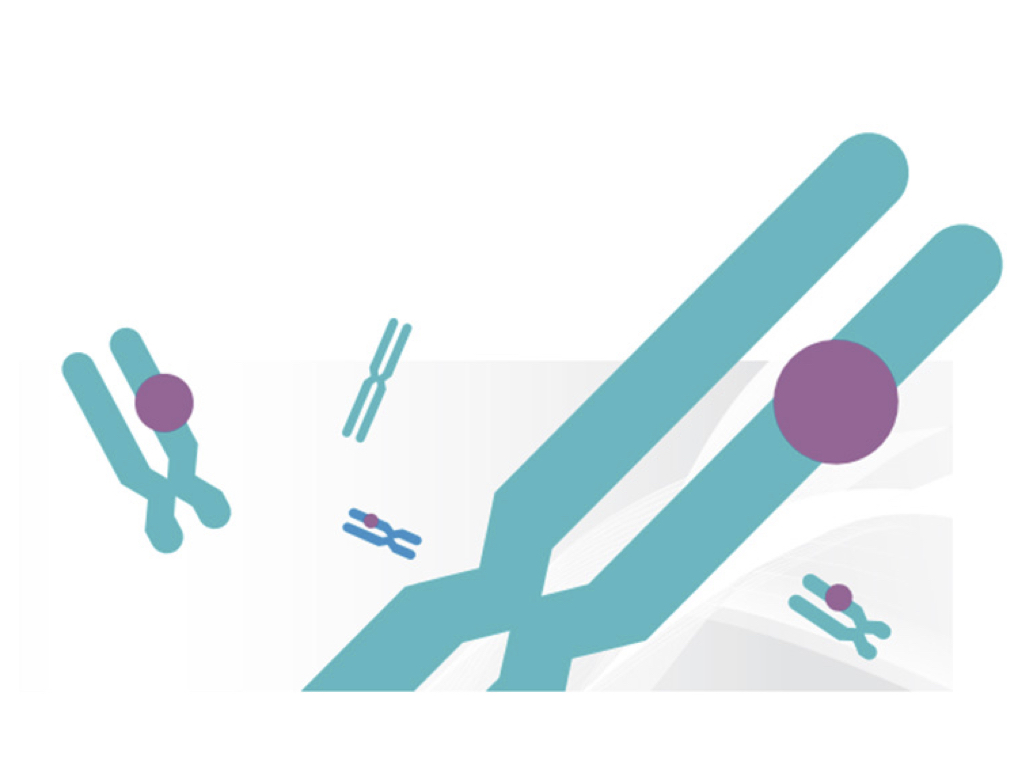5p deletion syndrome also known as cri du chat syndrome occurs by a deletion on the p arm of chromosome 5, patients cry like a cat.
Chromosome deletion occurs when some random events part some portion of the chromosome. The portion usually is huge having 10 to 1000 vital and important genes; deletion results in serious health-associated issues and problems.
Usually, problems and severity are linked with the number and type of genes deleted. For instance, if genes relevant to cognitive skills are deleted, patients probably have serious cognitive and mental skills issues.
Chromosome deletions are serious chromosomal- either structural or numerical changes that ordinarily have huge phenotypic effects.
In this article, I will explain one such serious type of condition: the 5p deletion syndrome. Patients usually with this condition cry like a cat and that’s why the name is given. I am explaining the whole genetic scenario, phenotypes and importantly why it’s known as Cri du Chat syndrome.
Stay tuned.
Related article:
| Name | Cri du chat syndrome |
| Chromosomal abnormality | Chromosome 5p deletion |
| Cytological indication | 5p- |
| Cytological Location | 5p12.1 to 5p15.33 |
| Natural of origin | De novo |
| inheritance | Inherited in some cases |
| Major phenotypes | Catlike crying pattern |
What is 5p deletion syndrome?
Many different deletions chromosome 5 has but it’s popularly known because of the huge 5p portion deletion showing various mental, cognitive and developmental abnormalities.
Various other names of the conditions are 5p minus syndrome, 5p deletion, 5p deletion syndrome, chromosome 5p del, cri du chat and 5p-.
In 1963, Lejeune and coworkers reported the first case of the 5p deletion. Previous historical study data suggest that the prevalence of 5p deletion (or Cri du chat) is 1 in 15,000 to 1 in 50,000 live births per year, worldwide.
Ordinarily, 5p deletions and symptoms of the 5p syndrome are classified
Broadly as “Cri du Chat syndrome.” 286 cases of the present condition are reported as per the 5p minus database.
An audio clip showing the difference between a baby crying with cri du chat syndrome and a normal cry.
Genetics of 5p syndrome:
Chromosomes are a complex network of DNA and protein whose function is to locate DNA inside the cell nucleus, efficiently. A total of 46 chromosomes in 23 pairs are present in every single cell.
The length of each chromosome and the number of genes on its arms vary.
Put simply, the 5p syndrome includes terminal or intrinsic deletion of a portion of the p arm of chromosome 5 on either or both chromosomes. However, how much of the portion gets deleted is still unclear.
The terminal and intrinsic deletion include missing parts on the end and at the middle of the p arm of chromosome 5, respectively.
Take a look at the image below,

A wide array of studies prove that the deletion range from 560kb to 40Mb in size, again, estimating the size of deletion is undetermined.
Take a look at some information on this,
- 5p deletion ranges between 560 to 40Mb.
- The present chromosomal condition is de novo in origin.
- ~90% of cases are paternal.
- ~15% of cases occurred by balanced translation
- 10 to 15% of deletions are inherited.
- 3 to 5% of deletions are interstitial and 80 to 90% are terminal; the maximum deletion range of the terminal deletion is 33Mb.
- Inversion and ring chromosomes are reported in less than one percent of cases
Notice Title
The 5p deletion doesn’t show genetic anticipation.
As we said, it’s de novo in origin, meaning it occurs randomly during the process of gametogenesis. Chromosome break occurs during the process and causes 5p deletion. The exact cause of the condition is unknown.
Studies also show that random events during fetal development (besides gametogenesis) also result in various deletion syndromes.
Usually, it’s paternal in nature and mostly non-inherited, meaning it can’t pass on from parents to their offspring. Notedly, 10% of cases including inheritance of balanced-translocation are inherited in nature.
This literally means that inheritance of balanced translocation from each parent causes unbalanced translocation, missing chromosome parts and deletion in a child. However, 5p deletion with balanced translocation is very rare.
As the parental translocations are balanced (no loss or gain of genetic material), no symptoms of the conditions or any problems are shown in parents. In fact, that makes it difficult to manage early.
Genes located on the 5p end, get deleted and involved in the haploinsufficient are TERT or hTERT, SEMA5A, CTNND2, MARCH6, SLC6A3, NPR3, CDH6, CDH9, CDH10, CDH12 and CDH18.
Molecular genetic studies evidence that mainly 3 genes are responsible for the severity of the disorder SEMAPHORINE F (SEMA5A), DELTA CATENIN (CTNND2) and TELOMERASE REVERSE TRANSCRIPTASE (htert).
Out of these, SEMA5A and CTNND2 genes are active in the cerebral region. The loss of these two genes causes intellectual disability. The deletion of the telomerase reverse transcriptase (hTERT) gene localized in the 5p region causes the physical changes in cri du chat syndrome.
Catlike critical region:
The region between 5p15.2 to 5p15.3 has significant involvement in the development of “cat cry-like” phenotype, this region has been known as Cat like critical region.
SEMA5A and CTNND2 located on 5p15.31 (9, 035, 137- 9, 546, 232) and 5p15.2 (10, 971, 951- 11, 904, 154), respectively, has definite effect on the phenotypic development.
Symptoms of 5p syndrome
The present genetic condition has a varying degree of symptoms including mental, motor, developmental and cognitive skills problems. Notedly, the severity of symptoms depends on the number of parts deleted.
Part studies also suggest that the phenotypic profile also varies among patients having similar deletion patterns or sizes. So there are other factors as well, are involved in the 5p deletion.
Some are additional copy number variation/deletions or duplications, occult duplication, the effect of modified and gene deleted, expression of genes associated and environmental factors.
As you see, this disorder affects the larynx i.s voice box so the patient will have difficulty in speaking. It also affects the nervous system, so the patient has motor disabilities. Other symptoms are:
- Low birth weight and poor developmental growth
- Small head (microcephaly) and jaw
- Behavioral problems like being hyperactive, aggressive
- Distinct facial features including wide space between eyes
- Weak muscle tone
- Some patients also have heart defects.
- Broader nasal bridge
- Low-set ears
- Hypertelorism
- Short neck
- Dental mal-occlusion
In addition to this, research also shows that the severity of the disease is more prominent when inherited paternally than maternal inheritance.
The chromosomal regions reportedly involved in the crying pattern are shown here in the table, though the mostly cry pattern is similar to the cat.
| Region deleted | Location (bp) | Phenotype |
| 640 Kb | 6, 365, 349 to 7, 003, 686 | Cat-like cry |
| 1.7 Mb | 5, 791, 886 to 7, 539, 901 | Cat-like cry |
| 1.2 Mb | 9, 460, 963 to 31, 996, 577 | Varied degree of intellectual disabilities |
| 13.8 Mb | 18, 190, 397 to 31, 996, 577 | Varied degree of intellectual disabilities |
| 540 Kb | 16, 570, 363 to 17, 108, 840 | Varied degree of intellectual disabilities |
| 8.9 Mb | 9, 460, 963 to 31, 996, 577 | Varied degree of intellectual disabilities |
| 5.4 Mb | 10, 361, 807 to 15, 728, 105 | Cat-like cry |
| 5.4 Mb | 10, 361, 807 to 15, 728, 105 | Gait problem |
| 5.5 Mb | 22, 178 to 5, 539, 182 | Cat-like cry |
| 2.6 Mb | 8, 939, 505 to 11, 588, 196 | Facial dysmorphic features |
| 8.3 Mb | 1 to 8, 268, 512 | Epicanthal folds folds |
| 3.6 Mb | 17, 770, 293 to 21, 394, 873 | Congenital heart defects |
| 3.2 Mb | 3, 021, 203 to 6, 412, 938 | Speech delay |
| 5.4 Mb | 10, 361, 807 to 15, 728, 105 | Microcephaly, hypertelorism, high palate and micrognathia |
| 5.5 Mb | Microcephaly and dysmorphic facial features. | |
| 8.3 Mb | 1 to 8, 268, 412 | Hypotonia and growth deficiency |
| 5.5 Mb | Hypotonia and feeding difficulties | |
| 4.2 Mb | 21, 911, 081 to 26, 132, 545 | strabismus |
| 4.2 Mb | 21, 911, 081 to 26, 132, 545 | Renal abnormalities |
Life Expectancy of 5p syndrome
The life span of the patient with cri du chat syndrome is normal as a healthy individual. The initial years of the patient are crucial. Once he crosses that stage, he can live for more than 50 years. Affected females reach puberty, attain secondary sex characteristics and menstruation at the same time as healthy females. The affected males have small testes, though spermatogenesis is normal.
Indeed, the mortality rate of the Cri du chat syndrome is too low, however, sometimes patients may die because of some other complications.
Diagnostic techniques for 5p syndrome
A limited number of techniques are available to screen or diagnose the 5p deletion syndrome. Karyotyping, FISH, deletion analysis by microarray and X-ray studies are several such techniques used as detection methods.
Diagnosis is very easy. The doctor can identify the typical cat-like cry of the affected infant accompanied by physical symptoms. During the prenatal examination, the deletion on the 5p chromosome causing cri du chat syndrome can be detected by amniotic fluid or chorionic villus samples by BACS on bead technology. G karyotyping also helps in the detection. A specific test known as fluorescence in situ hybridization (FISH) may be used to confirm the diagnosis of cri du chat syndrome.
Among all techniques, Karyotyping and FISH can diagnose the condition at the prenatal and postnatal stages.
Karyotyping:
The basic, most popular and traditional way to find out 5p deletion, in fact, any major chromosomal abnormality is the karyotyping technique. It’s a simple yet sensitive cytogenetic technique that relies on the serious cell culture method.
You can read about it here: What is karyotyping?
In brief, an investigator isolates and investigates chromosomes. It takes 2 to 3 days for the preparation and isolation of chromosomes. Subsidiary techniques like GTG banding, Q banding and NOR banding helps to study every chromosome under a microscope.
Differential banding patterns enable us to find out any major copy number variation like deletions or duplications. Note that the present technique is manual, time-consuming and requires experience to interpret the results.

FISH:
FISH short for Fluorescence In situ Hybridization is another technique that is more accurate than the karyotyping technique is the best way to study chromosomal abnormalities like the deletions.
It is more accurate in which using the probe-based hybridization method, the chromosomal aberrations can be ruled out.
This article may help you to learn more:
Treatment of 5p syndrome
Normally, treatment is determined by the various symptoms prominent in different patients. A team of specialists- pediatricians, orthopedists, surgeons, dentists, cardiologists, speech therapists coordinate together to determine a plan of action to give the best treatment to the patient. Each treatment is properly executed to make sure the child can achieve his maximum potential. Some patients have auditory problems, heart defects, cleft lips. They are treated accordingly. In cases of heart defect, surgery is necessary. Genetic counseling is done for the patients and their parents.
Things to know about the 5p deletion:
- Genetic counseling and prenatal diagnosis have an empirical role in the present condition. Genetic counseling benefits understanding and managing the condition while prenatal diagnosis benefits in prevention.
- Do visit your genetic counselor.
- None of the parents are responsible for the present genetic condition, so don’t blame each other.
- Do not panic or be anxious, the condition can be managed well if diagnosed early in the patient’s life.
- Supportive therapies like speech therapy, occupational therapy and other practices help to improve a patient’s life.
Wrapping up:
The major reason for the development of 5p deletion is still unknown and occurs by random events, other reasons like translocation, deletion and ring chromosome also may result in Cri du chat syndrome.
However, those cases are very rare.
This blog is about cytogenetics and karyotyping and that’s why I think this information may help you students as well as researchers to know more about the present condition.
Resources:
Chih-Ping chen et al.– https://doi.org/10.1016/j.tjog.2020.01.028.
Nguyen JM, Qualmann KJ, Okashah R, Reilly A, Alexeyev MF, Campbell DJ. 5p deletions: Current knowledge and future directions. Am J Med Genet C Semin Med Genet. 2015;169(3):224-238. doi:10.1002/ajmg.c.31444.


